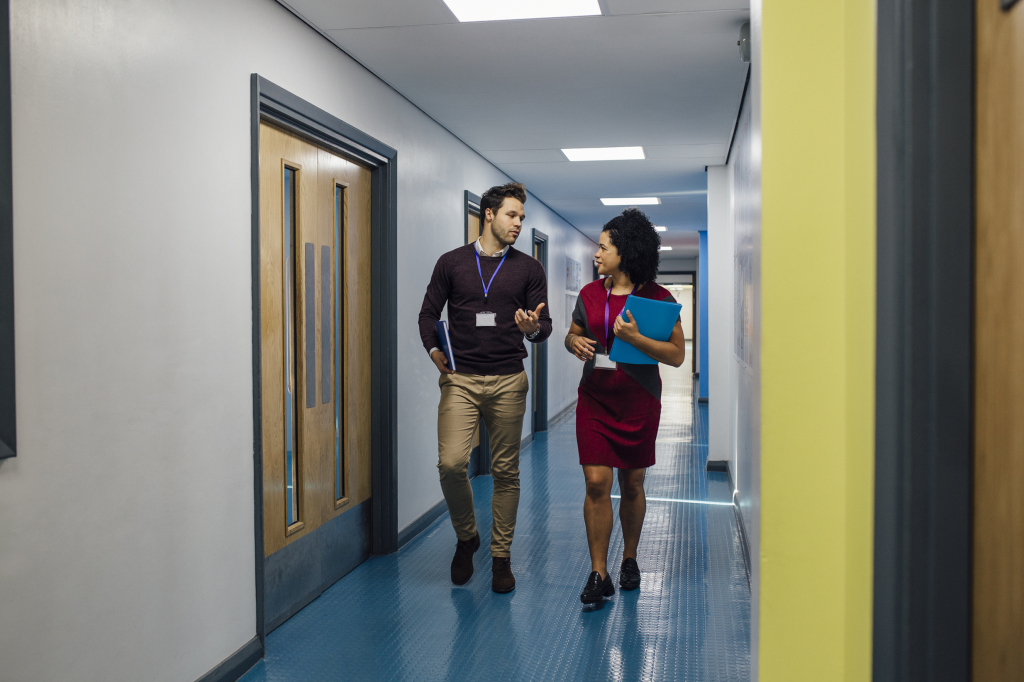
Autonomy AND partnership.
We live in an era which places a great premium on school-led; school controlled professional development. There is now a considerable consensus that the professional learning which has most meaning and makes the greatest difference is when it is clearly linked to teaching and learning and with a focus on improving classroom practice. This also resonates with the powerful movement towards increased school autonomy, self-improvement and collaboration. This emphasised, among others things, the range and depth of professional development expertise available within schools and the benefits to be gained from collaboratively marshalling this resource. Schools were to be the means of their own salvation, free from external authority constraints. Many commentators noted a marked shift in Government policy which struck “a startling new note,” observing that “the improvement of schools … rests primarily with them – not the government, local or central. The aim should be to create a self-improving system” (Hargreaves, 2011).
Laudable as these developments have been they raised a number of issues and concerns about the scope and quality of professional learning experiences. There is the danger of schools reinforcing stale practice rather than challenging and improving it. The emphasis on the need for professional development to be relevant does not preclude the contribution of external sources. Indeed, high quality professional development is best seen as a dynamic blend of school-led/school focused mixed with the zest of external input: “External input from providers and specialists must challenge orthodoxies within a school and provide multiple, diverse perspectives. Facilitators acting as coaches and mentors can provide support, for example modelling, observation and feedback” (Jones, 2015).
How this external input is used is crucial. Of course, it is not a matter of crudely “injecting expertise” into the school. Rather, it is best envisaged within the context of partnership working and this article explores in particular the nature of school-university partnerships – their difficulties and their potential. In the drive towards school autonomy the role of universities in the professional learning and development of schools has tended to diminish – but this is in danger of overlooking the significant contribution that higher education can make. School-university partnerships can be problematic but they also have considerable amount to offer (Handscomb, Gu and Varsey, 2014).
Learning lessons and moving forward
Thinking and debate about school-university partnerships have a considerable pedigree. There is extensive literature ranging across North America, Australia, Europe and the UK dating back over a number of decades. The scope of this literature is also wide and eclectic. It embraces both broad relationships between universities and schools focussed on, for instance, widening participation in universities of under-represented groups, to the more specific relationship between faculties of education and schools, focussed on initial teacher education, continuing professional development, consultancy and collaborative research.
McLaughlin and Black-Hawkins (2006) reflect ruefully on the often faltering progress made in school-university research collaborations. In their research to understand more about the complexities of such partnerships they see as problematic the time-limited and project-focussed nature of much partnership work, together with “the hard distinction of roles between university and teacher colleagues in terms of knowledge generation”. They illustrate this with a quote from one of their headteacher interviews: “We did lots of research, but ... it became like a comet in the firmament for a while and then fizzled”.
So, whilst drawing lessons learnt from past experience, the clear challenge is to move forward rather than re-trace steps, so that the gains of such partnerships are more than a passing light in the firmament. It is to identify the benefits of collaboration and explore how these can be sustained over time, through all the vicissitudes of change that affect both school and university sectors (James and Worral, 2000). To echo the challenge set by those leading the School-University Partnership Initiative (SUPI), it is to learn more about how to “facilitate the development of structured, strategic, sustainable and equitable partnerships between the schools and universities” (Chambers, 2014).